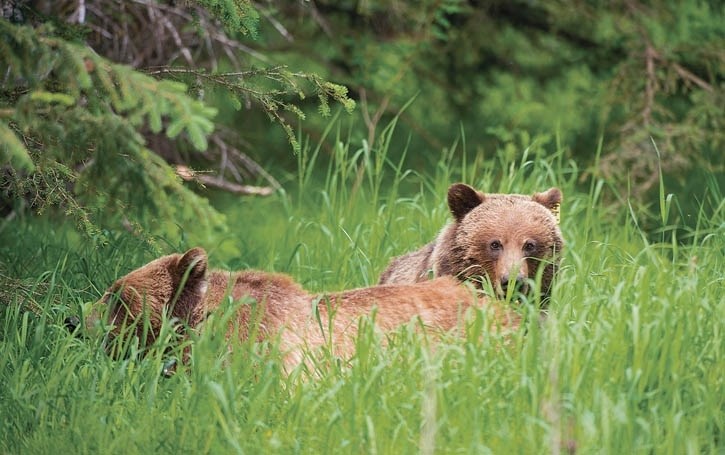A recent grizzly bear attack that left one man with serious traumatic, but non-life-threatening injuries, in the Madden area of Rocky View County (RVC) on Sunday has raised the issue of the frequency of bear attacks after the animal that mauled the Madden area man was connected to the death of a University of Calgary professor in 2021.
The grizzly bear that attacked the Madden hunter on Sunday has been identified, thanks to DNA samples, as the same bear responsible for the death of 59-year-old David Lertzman, an instructor at the University of Calgary’s Haskayne School of Business. Lertzman was trail running near his home in the community of Waiparous Village in May of 2021 when he was attacked from behind and was pushed over a 300-metre embankment.
While this most recent bear attack near Madden has been the first publicly reported attack in Alberta since last year, it is just the latest in a long line of statistics that make Alberta the county’s leading destination for bear attacks.
In an academic paper published earlier this year by Lakehead University titled: ‘A Comparison of Reports of Fatal Grizzly and Black Bear Attacks in Canada’, author Alexandra Poirer collected over 40 reports of bear attacks that have occurred and were reported on by major Canadian media from 1990 to 2023.
Since 1990, there have been 17 attacks by grizzly bears that have resulted in 20 fatalities, of which eight attacks and nine deaths have occurred in Alberta over that period. Over the same period, there have been a reported 22 black bear attacks, resulting in 24 fatalities.
In 2023, Doug Inglis and Jenny Gusse, were found dead alongside their dog in a remote area of Banff National Park. A wildlife attack response team reacting to a GPS message activated by Inglis before he was killed found the grizzly bear responsible and euthanized it, reporting that the bear showed “aggressive behaviour.”
In late May of 2021, two weeks after Lertzman was killed, a grizzly bear attacked and killed 68-year-old Barbara Collister while she walked the trails on her private property in Water Valley, just 24 kilometres from where Lertzman was attacked. Wildlife officers found and killed a “mature non-lactating” female grizzly bear, which DNA samples confirmed was responsible for Collister’s death.
Reporting of grizzly bear attacks by major news organizations, collected by Poirer in her paper, show that the month that saw the most amount of grizzly bear attacks was September with five. The same reporting also shows that black bears have attacked the most amount of people in June and September, with five each.
Poirer hypothesizes that the increased amount of bear attacks in September is “due to bears trying to build up layers of fat to sustain themselves for seasonal torpor that starts in the month following September.”
Doug Inglis, Jenny Gusse, and the Madden hunter were all attacked in September, adding some veracity to Poirer’s conclusion.
There have been six grizzly and black bear attacks since 2020, not including Sunday’s, which means that this decade is on track to surpass the last three previous decades' documented attacks by a significant margin.
The period from 1990 to 1999 saw 11 total bear attacks in Canada, resulting in 14 fatalities. The next decade, 2000 to 2009, witnessed 13 attacks and 13 fatalities. The years 2010 to 2019 saw nine attacks with 10 fatalities. The first three years of this decade have seen six recorded bear attacks that have resulted in seven fatalities.
It is uncertain why the number of bear attacks has occurred in such quick succession to start this decade, but in her paper, Poirier hypothesizes that it may be because of the encroachment of urbanization on what used to be a natural habitat.
“It is impossible to know if bears involved in fatal attacks were acting in a predatory or defensive way,” Poirer writes. “An increase in urbanization in Canada may contribute to an increase in fatal bear attacks, or at least human-bear interactions, as bears may be pushed out of their preferred habitats in search of more easily available resources.”




